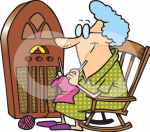SHORTWAVE RADIO ADVANCES
Almost all of the early experiments with wireless were carried out on what we would now call
longwave. However, Marconi himself conducted wireless tests initially on frequencies of about 2 MHz and he, along with many
other researchers, found that attempts to increase the transmission range, an increase in power was not sufficient.
Fading difficulties appeared, and they were overcome by reducing the operating
frequency, which appeared to be the generally adopted solution when long distances were to be covered. It was also recognized
that an increase in atmospheric interference increased if the frequency was lowered.
Early research tended to concentrate on the longwave bands, due to the difficulties
of fading for the higher frequencies.
Another problem was due to the non-existence of suitable vacuum tubes for transmitting
purposes on shortwave, where higher powers were required.
During WW1, and particularly towards its end, shortwaves were in fact being used
for army and air force signalling for short distances, where communications were crowded by the narrow fighting fronts. Frequencies
of about 2 MHz were used with portable spark transmitters and occasional telephony.
It was during this period, and shortly after the end of WW1, that research was
concentrated generally into the longwave and mediumwave regions.
After the end of hostilities, amateur radio involvement intensified, and experimenters
were forced, by government regulations, into the shorter wavelength region, due to the official need to retain spectrum usage
on the lower frequencies for the regular services.
The experimentation
which was conducted on the higher frequencies soon revealed that long distance transmission was indeed possible, and rather
than the shortwave spectrum being termed a kind of no man’s land, it rapidly developed in popularity, both for private
experimenters and commercial enterprises alike.

